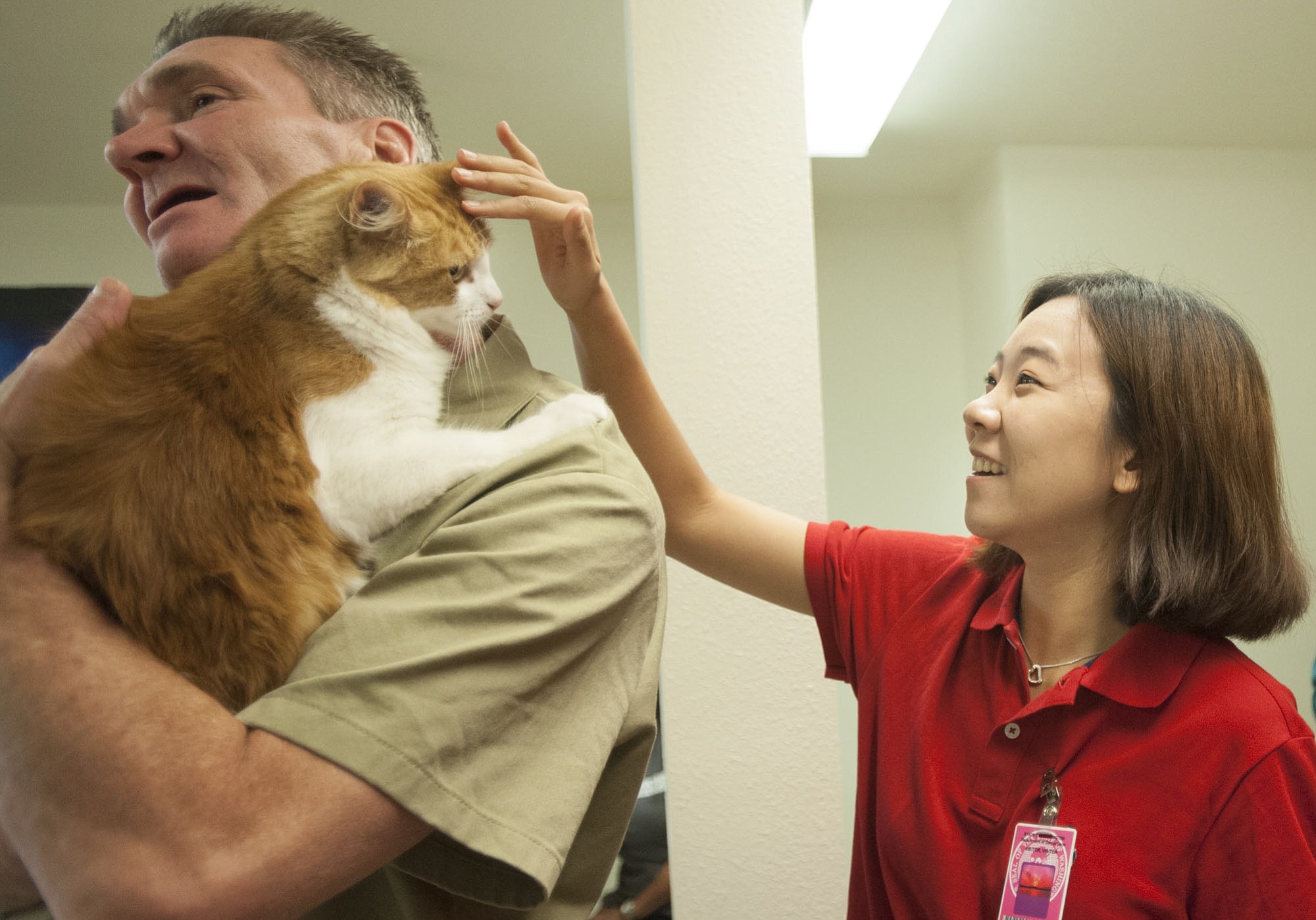YACOLT — A team of South Korean college students traveled to Clark County last week to study a Larch Corrections Center program that pairs prison inmates with cats, with the idea that their country’s juvenile reformatories might benefit from a similar program.
It’s a mission that many in Korea are watching closely. The four students — Woo Jeong Kim, Yu Ree Ko, Hyung Min Kim and Hyun Jae Ryu — were among 30 teams chosen out of 4,000 teams that applied for the 21st LG Global Challenger, a program sponsored by Korean company LG Electronics Inc.
Every year, teams of university students submit proposals for an idea to research overseas and bring back to Korea, with a goal of making the world a better place. The teams selected for expeditions prepare 50-page reports detailing the findings of their two-week trips, which are fully funded by LG. After reviewing the reports, the company chooses a team for the grand prize, which includes money, LG products, internships and possibly a job offer.
The students who visited Clark County, all fluent in English, are classmates at Seoul’s prestigious Yonsei University, which is the equivalent of Yale in the United States. Their proposal, called the Buddy Plan, would match homeless dogs and cats with youth offenders behind bars. Such a program is necessary, they said, because youth crime has been rising in Korea since 2008, and the rate at which the young criminals re-offend is more than 40 percent. The reformatories’ current rehabilitation programs “are out of focus” and don’t do much to foster psychological stability in the prisoners, Ko said.




